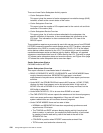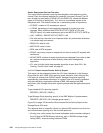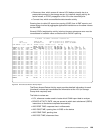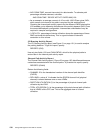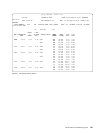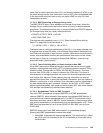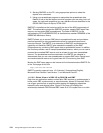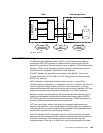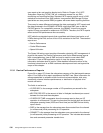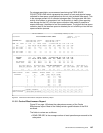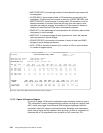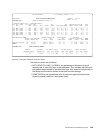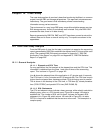134 Storage Management with DB2 for OS/390
2. Starting RMF2SC on the PC, using appropriate options to select the
reports to be converted.
3. Using your spreadsheet program to manipulate the spreadsheet data.
Details of how to do this depend on which program you are using, but in all
cases, the cells and ranges that you can reference are as described in the
OS/390
RMF Report Analysis, SC28-1950.
RMF2SC is installed on the host along with the rest of the MVS components of
RMF. The deliverable includes the RMF2SC program, sample RMF report files,
macros, and converted RMF spreadsheets. The code of RMF2SC (in the
self-extracting ZIP file ERB9R2S.EXE) is distributed as member ERB9R2S of the
SERBPWS distribution library.
RMFPP allows you to convert RMF data to spreadsheet format and provides a
practical approach to using spreadsheet macros for converted reports and
overview records. The RMFPP is an extension of RMF2SC and enhances its
capability and flexibility. RMFPP also extends the capability of the RMF
Postprocessor by converting RMF report data to spreadsheet format. In addition,
the function provides a set of sample spreadsheet macros, which you can use to
process the converted RMF reports, and as a base for your own spreadsheet
macros. The spreadsheet macros contained in the RMFPP are samples to
demonstrate how you can use spreadsheets to process RMF data. Device trend
and cache statistics macros are a good base for I/O monitoring from RMF.
Monitor the RMF home page on the Internet to find information about RMFPP. Go
to the Tools page of this site:
http://www.s390.ibm.com/rmf
RMFPP currently supports Lotus 1-2-3 Version 5 (International English),
Microsoft Excel Version 5 and Version 7, and Microsoft Excel 97.
11.2.2.5 Global View of a DB2 I/O by DB2 PM and RMF
Each time an application reads or writes data, DB2 requires or updates pages in
buffer pools. DB2, synchronously or asynchronously, issues I/O requests, which
can trigger synchronous or asynchronous staging and destaging operations
between cache and physical disks. Figure 53 on page 135 displays the
relationships between DB2 PM and RMF views of an I/O request from or to disk.



